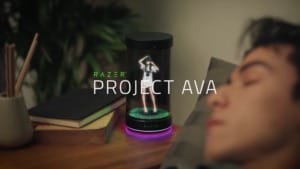Meta updates AI labels for Facebook and Instagram content
Meta updates how it labels AI-edited content on Instagram and Facebook, making the tags less visible but more accessible to check through a new menu system.

Meta is adjusting how it labels content on Instagram, Facebook, and Threads that have been altered or created using generative AI. To improve user experience, the company is changing the visibility of its “AI Info” tag, which identifies whether content has been edited with AI. Instead of placing this label directly beneath the creator’s name, Meta will move it to a menu in the top-right corner of images and videos.
This update will allow users to click on the menu and check if AI information is available for a particular content. They can then read about any edits or adjustments made using AI tools. Previously, Meta tagged all AI-related content regardless of the level of AI involvement—whether it was a minor edit made through tools like Photoshop or content entirely generated from a text prompt. This change aims to clarify the distinction between AI-adjusted and fully AI-generated content.
Meta responds to creators’ concerns
The decision to adjust the AI labels follows feedback from creators and photographers who felt the previous “Made with AI” label was inaccurate. The tag was criticised for being applied too broadly, sometimes mislabeling real photos as AI-generated. The updated “AI Info” label will now only appear on content that has either been detected as AI-generated or where users have self-disclosed the use of AI tools.
Meta also explained that the AI Info label would still be shown when content is identified as having been created with the help of AI. This includes industry-recognised signals such as metadata from Adobe’s C2PA-supported Content Credentials, which tracks and labels content edited using AI-powered tools like Adobe Firefly. Google uses a similar system called SynthID, which digitally watermarks AI-generated images. Meta hasn’t yet revealed all the systems it uses to detect AI, but the label will appear in instances where content has been manipulated.
Concerns about misinformation
While Meta’s move to make AI labels less visible may seem like a way to improve the user experience, it raises concerns about the potential for misinformation. Advanced generative AI tools are becoming increasingly sophisticated, especially in newer smartphones, making it easier than ever to create highly convincing edits. By removing easily accessible AI tags on manipulated images and videos, users could be more vulnerable to misleading content.
Meta has yet to disclose exactly how many systems it checks for AI detection. Still, the company insists the changes will help better represent the proper level of AI involvement in each piece of content. These updates are expected to roll out next week.
















